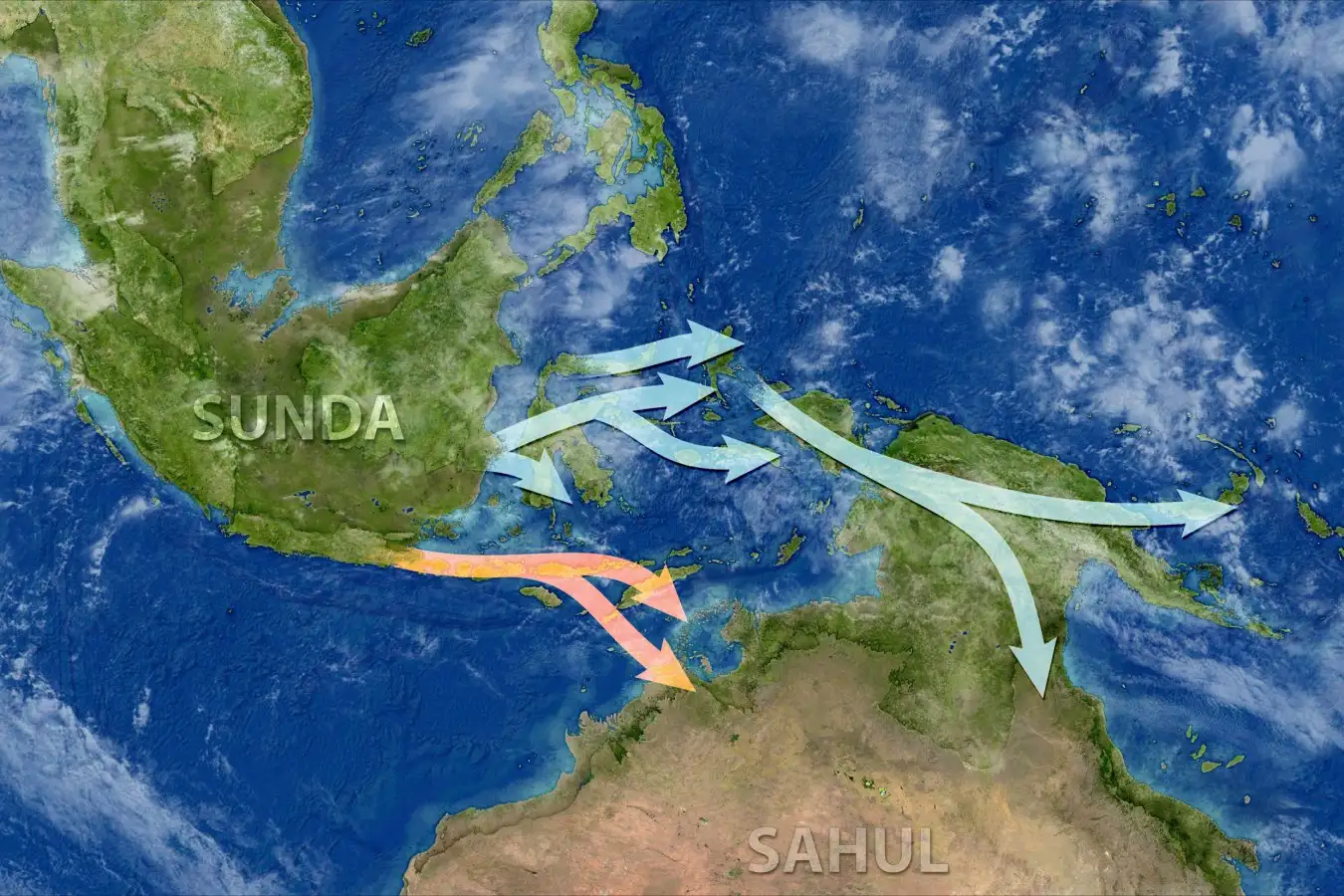
Ancient humans took two distinct routes to what is now Australia
Helen Farr and Erich Fisher
When and how ancient humans reached what is now Australia and New Guinea has been a long – and hotly contested – discussion. Now, the results of a genetic study suggests it occurred at least 60,000 years ago and almost certainly involved two distinct routes.
Mainland Australia, Tasmania and New Guinea once made up the giant, ancient continent of Sahul, which existed during glacial maximums when sea levels were lower. For many years, archaeologists have been interested in humanity’s arrival there because, even with lower sea levels, it would have involved treacherous open ocean crossings of at least 100 kilometres.
There are two main proposals for when they reached Sahul: the first says this occurred at least 60,000 years ago, while the second puts it at around 45,000 years ago.
As for how they did it, scientists have put forward two possible routes. The first is a southern one that went from what is now the South-East Asian mainland, through the Sunda region – including Malaysia, Indonesia and Timor island – and then by sea to Australia. The second – the northern route, which has more robust evidence supporting it – speculates that humans migrated to what is now New Guinea via the Philippines and Sulawesi, where million-year-old stone tools made by hominins were recently found.
To get to the bottom of this, Martin Richards at the University of Huddersfield in the UK and his colleagues analysed almost 2500 genome sequences from Indigenous Australians, Papua New Guineans and people from throughout the western Pacific and south-east Asia.
By looking at the rate of mutations in the DNA and genetic connections between the populations, the team has concluded that the first settlement of Sahul by humans actually took place via both of the routes, though most used the northern one.
The researchers may have also put the issue of when this happened to bed. “We dated both dispersals to about the same time – roughly 60,000 years ago,” says Richards. “This supports the so-called ‘long chronology’ for settlement, as opposed to the so-called ‘short chronology’, which suggests settlement around 45,000 to 50,000 years ago.”
The study also reveals that the migration wasn’t just one way, based partly on the discovery of an ancient New Guinean genetic lineage found in a 1700-year-old Iron Age burial on Sulawesi. In addition, the team uncovered evidence that very soon after reaching Sahul, sea-faring and coastal people made their way to what is now the Solomon Islands.
Adam Brumm at Griffith University in Brisbane, Australia, says the growing field of palaeogenetics – studying the past through preserved genetic material – means “the story seems to change on a paper-by-paper basis”.
“I think this study offers strong support to the growing idea that the northern route was the key to the initial peopling of Australia,” says Brumm. “This is already becoming increasingly more likely on the basis of our discoveries of very old cave art in Sulawesi, the largest Wallacean island.”
Sophisticated rock art here dates to at least 51,200 years ago, says Brumm. “I strongly suspect that people were painting in the caves and shelters of Sulawesi by as long ago as 65,000 years or more.”
Peter Veth at the University of Western Australia in Perth says that even the most conservative estimates at the Madjedbebe site in the Northern Territory of Australia now suggest that signs of human activity date back more than 60,000 years, and the new work adds weight to the earlier arrival of humans into Sahul.
Discovery Tours: Archaeology and palaeontology
New Scientist regularly reports on the many amazing sites worldwide, that have changed the way we think about the dawn of species and civilisations. Why not visit them yourself?
Topics:
Source link : https://www.newscientist.com/article/2506312-ancient-humans-took-two-routes-to-australia-60000-years-ago/?utm_campaign=RSS%7CNSNS&utm_source=NSNS&utm_medium=RSS&utm_content=home
Author :
Publish date : 2025-11-28 19:00:00
Copyright for syndicated content belongs to the linked Source.